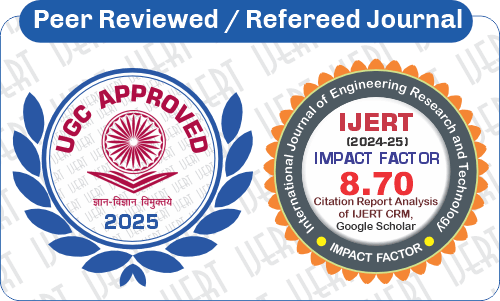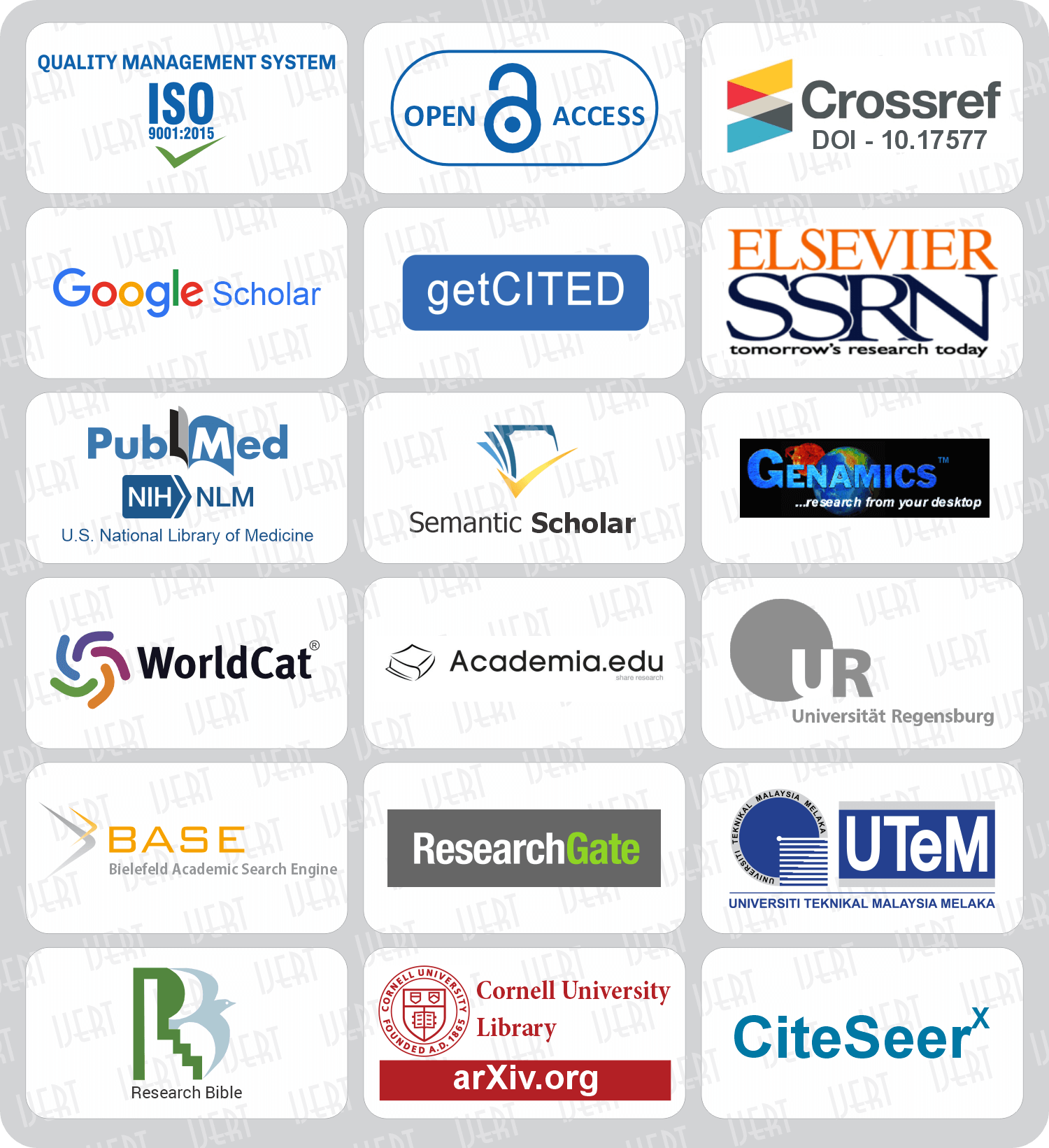 DOI : 10.17577/IJERTCONV2IS10038
DOI : 10.17577/IJERTCONV2IS10038
- Open Access

- Total Downloads : 7
- Authors : Vikas Jain, Raunak Jangid, Kapil Parikh
- Paper ID : IJERTCONV2IS10038
- Volume & Issue : NCETECE – 2014 (Volume 2 – Issue 10)
- Published (First Online): 30-07-2018
- ISSN (Online) : 2278-0181
- Publisher Name : IJERT
- License:
 This work is licensed under a Creative Commons Attribution 4.0 International License
This work is licensed under a Creative Commons Attribution 4.0 International License
Modeling, Simulation & Stability analysis for Small Grid Interconnected with wind and Fuel Cell
Vikas Jain1 , Raunak Jangid2 , Kapil Parikp
1M Tch Student, Pacific University, Udaipur
2,3 Assistant Prof., Shrinathji Institute Of Technology & Engineering, Nathdwara
er.vikas.jain1155@gmail.com1 raunakee.85@gmail.com2 kapil parikp0@gmail.com3
ABSTRACT: This paper work the detail transient operation of a wind energy conversion system (WECS) used simultaneously as an active filter and power generator. This study is intended to address the system response to two types of transient phenomena: voltage dips (fast transients) and wind speed variations (slow transients). The system response to voltage dips is governed by the electrical system dynamics and control method and results in the evaluation of the WECS low-voltage ride through capability. The study of the system response to wind speed variations requires a complete mechanical model to be included. Due to ever increasing energy consumption, rising public awareness of environmental protection, and steady
-
MODELLING OF HYBRID SYSTEM
-
WIND TURBINE GENERATOR MODEL
According to the principle of aerodynamics, output power characteristic of wind turbine is described as follows:
= 1 2 , 32 (2.1)
The tip-speed ratio of wind turbine is written as:
progress in power deregulation, alternative (i.e., renewable and fuel cell based) distributed generation (DG) systems have attracted increased interest.
=
(2.2)
Wind power generation is the most promising renewable energy technologies. The various energy sources such as wind/DG/Fuel Cell are modeled individually and latterly integrated to form a hybrid system. The developed SIMULINK model of hybrid system is then connected to 11KV grid through an AC bus. Dynamic models for the main system components, namely, WIND/ FC are developed with the
The aerodynamic torque can be expressed as:
= 1 2 , 23 (2.3)
The torque coefficients which is given by:
= , 1 , (2.4)
help of MATLAB/SIMULINK software. Simulation studies have
been carried out to verify the system performance under fault
condition. The modeling of hybrid WIND/ FC/ DG system and there affect on grid stability is addressed in this work
The fitting functions of CT , is obtained by:
5
Key words: Hybrid system, WECS, Full Cell
-
INTRODUCTION:
, = 1
2 + (2.5)
3 4 6
Nowadays many applications in rural and urban areas use hybrid systems. The power system in this study consists of a
wind turbine and proton exchange membrane (PEM) fuel cell
1 = 1
+0.08
0.035
3+1
(2.6)
(FC). These components have very different characteristics. But when they are engineered properly, they can work together to generate power in a sustainable and reliable way. Fuel cell and wind together can supply constant power to some extent. However, because of the intermittency nature of these two sources, the power will not be delivered to load at a constant rate, so there will be either excess or deficit of electric power. In the case of positive balance the excess electricity is converted to hydrogen in an electrolyzer, and when the electricity balance is negative then the fuel cell will supply the deficits. Reliable electricity supply cannot be ensured because of the intermittent nature of renewable energy sources. Therefore, wind, solar and FC hybrid systems, which combine conventional and renewable sources of energies, are a better choice for isolated loads
Where, C1 ,, C6 is the undetermined coefficient according to characteristic of wind turbine.
Fig 1 Dynamic Model of Wind Turbine
-
-
FUEL CELL MODELLING
The PEMFC model designed in MATLAB and SIMULINK for this study. This model is built using the relationship between output voltage and partial pressure of hydrogen, oxygen and water. Fig. 2 shows the detailed model of the
PEMFC, which is then embedded into the SIM POWER SYSTEMS of MATLAB as a controlled voltage source and integrated into the overall system. The relationship between the molar flow of any gas (hydrogen) through the valve and its partial pressure inside the channel can be expressed as
-
WIND PLANT CONNECTED WITH GRID DURING DIFFERENT FAULT CONDITION
2 = =
(2.7)
2
2
2
For hydrogen molar flow, there are three significant factors: hydrogen input flow, hydrogen output flow and hydrogen flow during the reaction. The relationship among these factors can be expressed as
= (2.8)
2
2
2
2
According to the basic electrochemical relationship between the hydrogen flow and the FC system current, the flow rate of reacted hydrogen is given by
Fig 3 SIMULINK Model of Wind Plant and Grid During Fault
-
LG FAULT
= 0 = 2
(2.9)
2
2
applying Laplace transform, the hydrogen partial pressure can be obtained in the s domain as
1 2
2
= 2
(2.10)
1 + 2
2
Fig 2 Dynamic Model of Fuel Cell
-
-
SIMULATION AND RESULTS
In this paper simulated results for various types of interconnections are presented during line to ground fault condition on grid. Stability is being determined under the following conditions:
-
When wind plant is connected and not connected with grid
-
When fuel cell plant is connected and not connected with grid
Fig 4.Voltage and Current Waveform on Grid When Wind Plant is Not Connected
Fig 5: Voltage and Current Waveform on Grid When Wind Plant is Connected
-
LL FAULT
Fig 6 Voltage and Current Waveform on Grid When Wind Plant is Not Connected
Fig 7 Voltage and Current Waveform on Grid When Wind Plant is connected
-
LLG FAULT
Fig 8 Voltage and Current Waveform on Grid When Wind Plant is Not Connected
Fig 9 Voltage and Current Waveform on Grid When Wind Plant is connected
Table 1. Values of Voltage and Current Before and After Connecting Wind Plant under Normal and Faulty Condition
Without wind
plant
With wind plant
V(nom.)
11.2Kv
11.7Kv
I(nom.)
850A
750A
V(fault)
6.4Kv
6.9Kv
I(fault)
7340 Amp.
7320 Amp.
Fig 10 Graphical Representation of Different Values
-
Discussion-1 voltage and current waveforms when wind plant are not connected and connected with grid during LG, LL, and LLG fault respectively. Single line to ground fault takes place on grid for 0.5sec. During fault we have analyzed the parameters such as voltage, current and checked the system stability. It is clear from the above that voltage profile is considerably improved after wind plant interconnected with grid, whereas value of current is reduced as compared to fig. The various datas of voltage and current are shown in table 1. These values are being represented by plotting a graph. After connecting the wind plant system to the existing system we can say that power system stability is bing improved by 1.078%
-
FUEL CELL PLANT CONNECTED WITH GRID DURING FAULT
Fig 13 Voltage and Current Waveform on Grid When Wind Plant is Not connected
-
LL FAULT
Fig 11 SIMULINK Model of Fuel Cell Plant and Grid during Fault
Fig 12 Voltage and Current Waveform on Grid When Fuel Cell Plant is Not Connected
-
LG FAULT
Fig 14 Voltage and Current Waveform on Grid When Wind Plant is connected
3.6 LLG FAULT
Fig 15 Voltage and Current Waveform on Grid When Fuel Cell Plant is connected
Table 2: Values of Voltage and Current Before and After Connecting Fuel Cell Plant Under Normal and Faulty Condition
Without fuel cell
plant
With fuel cell
plant
V(nom.)
11.2Kv
11.650Kv
I(nom.)
850A
758.46A
V(fault)
6.4Kv
6.665Kv
I(fault)
7340 Amp.
7332.45 Amp.
Fig 16 Graphical Representation of Different Values
-
-
CONCLUSION AND DISCUSSION
This work shows the impact of fault on power system transient stability of large wind power system. The dynamic modeling and simulation results of a wind energy based fuel cell power system which consists of wind turbine (WT) systems for power generation has been presented. The energy sources such as wind/fuel cell are modeled individually and latterly integrate in Matlab/Simulink software. The developed Simulink model of hybrid system is then connected to 11KV grid through an AC bus. Simulation studies have been carried out to verify the system performance under fault condition. Simulation results shows that after combining wind, fuel cell power the system stability has been considerably improved as compared to using independent wind / fuel cell power.
The transient response of a WECS operating as power has been presented. The conclusion of this study is as follows:
-
Harmonic compensation and transient response do not interfere. Voltage and wind speed variations contribute to determine the behavior of the fundamental components only; the harmonic currents flow results from the NLL characteristics. It has been observed that de-rating implemented when harmonic compensation is applied helps protecting the WECS during the transients.
-
Reactive power regulation minimizes the voltage oscillations at the PCC during wind speed transients: a reactive power regulator has been designed to perform this operation. For example, the effect of the length of the transmission line on the voltage profile after a wind speed variation has been addressed.
-
Electrical system: Phase jump during the fault has an important role in determining the transient response and will require a dedicated analysis, while NLL characteristics and reactive power requirements affect steady-state operation and derating.
-
Mechanical system: Blade and generator inertia affect the regulation of power absorption at high wind speed, thus impacting the quality of electric energy injected in the grid following severe wind speed variations.
REFERENCES
[1.] T. Ackermann, Wind Power in Power Systems. Hoboken, NJ: Wiley, 2005. [2.] L. H. Hansen, P. H. Madsen, F. Blaabjerg, H. C. Christersen, U. Lindhard, and K. Eskildsen, Generators and power electronics technology for wind turbines, in Proc. 27th Annu. Conf. IEEE Ind. Electron. Soc., Denver, CO, Nov. 29Dec. 1, pp. 20002005. [3.] B. Singh, K. Al-Haddad, and A. Chandra, A review of active filters for power quality improvement, IEEE Trans. Ind. Electron., vol. 46, no. 5, pp. 960971, Oct. 1999. [4.] H. Akagi, E. H. Watanabe, and M. Aredes, Instantaneous Power Theory and Applications to Power Conditioning. Hoboken, NJ: IEEE Press, 2007. [5.] M.T.Abolhassani,H.A.Toliyat, and P.Enjeti, Stator flux oriented control of an integrated alternator/active filter for wind power applications, in Proc. IEEE 2003 Int. Electr. Mach. Drives Conf., Madison, NJ, 14 Jun., pp. 461467. [6.] M. T.Abolhassani, P.Niazi, H. A. Toliyat, and P. Enjeti, Integrated doubly fed electric alternator/active filter (IDEA), a viable power quality solution, for wind energy conversion systems, IEEE Trans.Energy Convers., vol. 23, no. 2, pp. 1642650, Jun. 2008
[7.] E. Tremblay, A. Chandra, and P. Lagace, Grid-side converter control of DFIG wind turbines to enhance power quality of distribution network, in Proc. Power Eng. Soc. General Meeting, Montreal, Canada, 1822 Jun. 2006, pp. 15421547. [8.] H. Polinder, J. Morren, "Developments in wind turbine Generator Systems," presented at the 8th Int. Conf. Modeling and Simulation of Electric Machines, Converters and Systems, Electrimacs, Hammamet, Tunisia, Apr. 2005. [9.] A. Perdana, O. Carlson, J. Persson, "Dynamic Response of Gridconnected Wind turbine with Doubly Fed Induction Generator during Disturbances," presented at the Nordic Workshop on Power and Industrial Electronics, NTNU, Trondheim, Norway, June 2004. [10.] A. Petersson, L. Harnefors, T. Thiringer, "Evaluation of current control methods for wind turbines using doubly-fed induction machines," IEEE Transactions on Power Electronics, vol. 20, n. 1, pp. 227-35,Jan. 2005
[11.] J. Morren, S. W. H. de Haan, "Ridethrough of wind turbines with doubly-fed induction generator during a voltage dip," IEEE Transactions on Energy Conversion, vol. 20, n. 2, pp. 435-41, June 2005. [12.] G. Todeschini and A. E. Emanuel, Wind energy conversion system as an active filter: Design and comparison of three control systems,2096-2103.
[13.] G. Todeschini, Wind energy conversion systems as active filters: Steadystate transient analysis, in Electrical EngineeringCircuit Design, Saarbruecken, Germany, VDM Publishing House, Jun. 2010. [14.] B. Andresen and K. Johansen, Grid code and wind farm control requirementsWhat to control, why, where and how, in Proc. 7th Int. Workshop Large Scale Integr.Wind Power Transmiss. Netw.OffshoreWind Farms, Madrid, Spain, 2627 May 2008, pp. 16. [15.] A. Petersson, S. Lundberg, T. Thiringer, "A DFIG wind turbine ridethrough system Influence on the energy production," Wind Energy, vol. 8, n. 3, pp. 251-63, July/Sept. 2005. [16.] T. Sun, Z. Chen, F. Blaabjerg, "Transient stability of DFIG wind turbines at an external short-circuit fault," Wind Energy, vol. 8, n. 3, pp. 345-60, July/Sept. 2005 [17.] S. Skander, I. Slama-Belkhodja, "Analysis of a Doubly Fed Induction Generator Simple Control in presence of small voltage dip," Electrimacs 2005, Hammamet, Tunisia, 2005. [18.] M. T. Abolhassani, P. Niazi, H. A. Toliyat, P. Enjeti, "A sensorless integrated doubly-fed electric alternator/active filter (IDEA) for variable speed wind energy system," Conference Record of the 2003 IEEE Industry Applications Conference, vol. 1, pt. 1, pp. 507-14, 2003. [19.] B. N. Singh, A. Chandra, K. Al-Haddad, "Performance comparison of two current control techniques applied to an active filter," 8th International Conference on Harmonics and Quality of Power, vol. 1, pt. 1, pp. 133-8, 1998 [20.] M. Yamamoto, O. Motoyoshi, "Active and reactive power control for doubly-fed wound rotor induction generator," IEEE Transactions on Power Electronics, vol. 6, n. 4, pp. 624-9, Oct. 1991 [21.] R. Pena, J. C. Clare, G. M. Asher, "Doubly fed induction generator using back-to-back PWM converters and its application to variable- speed wind-energy generation," IEE Proceedings-Electric Power Applications, vol. 143, n. 3, pp. 231-41, May 1996 [22.] J. Morren and S. W. H. de Haan, Ridethrough of wind turbines with doubly-fed induction generator during a volage dip, IEEE Trans. Energy Convers., vol. 20, no. 3, pp. 435441, Jun. 2005. [23.] A. Mullane, G. Lightbody, and R. Yacamini, Wind-turbine fault ridethrough enhancement, IEEE Trans. Power Syst., vol. 20, no. 4, pp. 1929 1937, Nov. 2005.




